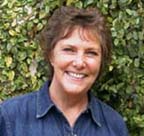
 |
Shadow Theater Science Lesson
|
| When young children are faced with the daunting task of assigning meaning to complicated scientific terms I find theater brings the concepts to life. As part of our 1st grade science curriculum we are learning about the water cycle. My six-year-olds must know the meaning of the words: condensation, evaporation, and precipitation. A table, cardboard box, white paper and a flashlight (or lamp) and an audience do the trick. Here's how. |
| Here's how. | |
| Shadow theater:
Place a cardboard box on a table with the opening and flaps facing toward the back. Cut an opening in the bottom of the box (facing the audience) to crate the screen. Leave about an inch rim on all sides. Tape white butcher paper inside along the one-inch rim. Glue a piece of wavy black paper to the bottom of the screen to represent the ocean. Place light source several feet behind the box. Children may decorate the outside of the box with weather pictures. You've just built your shadow theater. |
 |
| Props:
You will need black construction paper and five chop- sticks. (*See illustrations) |
|
| 1. Cut a fluffy cloud large enough to fill half the sky. Attach a chopstick to the side.
|
2. Make a sun for the sky and attach a chopstick to it as well.
|
| 3. Glue two sheets of black paper together before cutting the arrows because this prop needs to be more rigid (or use tag and color it black).
|
4. Attach the chopstick on the side at the bottom edge. Finally, cut thin strips of tissue paper and glue to the chopstick to represent rain.
|
| Script:
Narrator: Have you ever noticed that water is hardly ever still? Every drop of water travels on a long journey called the water cycle. Watch as we show you what happens. First the sun heats the air. Enter sun. The puppeteer holds the sun at the upper edge of the screen. Narrator: Energy from the heat in the air causes the water in the oceans, lakes and rivers to turn into a gas called water vapor. The water vapor rises into the air. This is called EVAPORATION. Enter arrows. Second puppeteer holds the arrows along the top of the ocean. Narrator: This is what happens next. When air cools it can hold less water vapor. The vapor condenses into tiny water droplets. The droplets gather together in the sky to form clouds. This is called CONDENSATION. Enter cloud. Third puppeteer holds cloud in sky above the arrows. EXIT sun and Arrows. Narrator: The water droplets in a cloud move around all the time. When they bump into each other the droplets combine into bigger droplets. When the droplets become so big and heavy the air can no longer hold them up, they fall as rain or snow. This is called PRECIPITATION. Enter rain. Fourth puppeteer holds rain just below the cloud. Rain must move back and forth slightly to show that it is falling. After a moment the Sun re-enters. Exit rain and clouds. Narrator: And the cycle begins again; over and over and over again. It never ever stops. When the words: evaporation, condensation and precipitation are said by the narrator, a child can stand with a large sign on which the word is printed. |
|
| My class performed this shadow play for the other 1st grade classes that are also learning about the water cycle and weather. It was an enormous success. I'm sure you can adapt this process to other science or social studies topics. Have fun. | |
| Until next month, Lynn |
Click here to download the PDF version of this page
HOME PAGE / BOOKS PAGE / GALLERY / KIDS PAGE / TEACHERS/LIBRARIANS